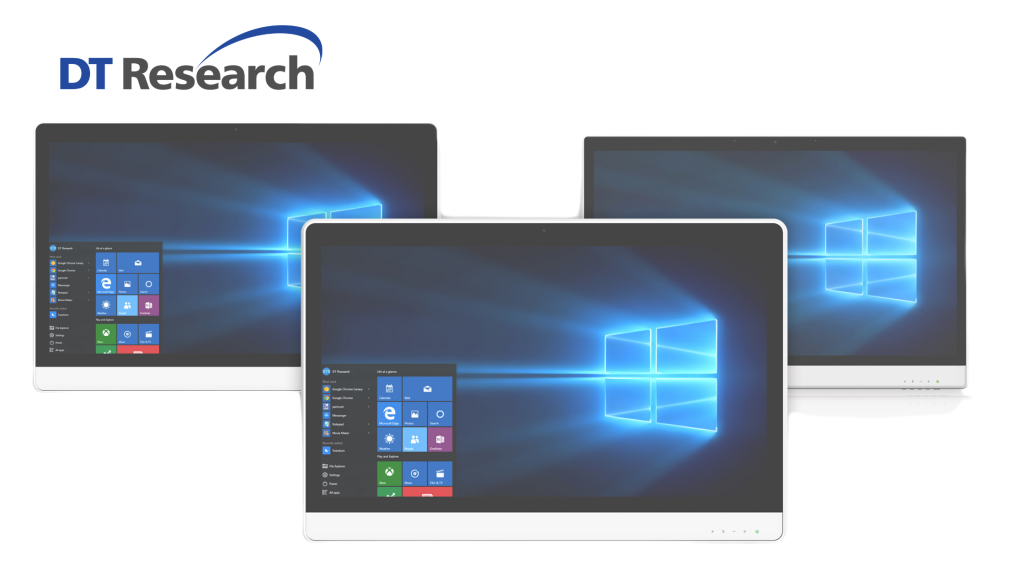
DT Research, the leading provider of purpose-built rugged computing solutions, has announced the unveiling of its new line of 55x series all-in-one (AIO) medical graphics stations designed specifically for use in augmented reality navigation, robotic surgeries, and 3D simulations. These medical graphics stations were showcased at the HIMSS Global Health Conference and Exhibition, the largest healthcare technology event in the United States.
The 55x Series
The 552, 554, and 557 medical graphics stations (55x series) are purpose-built to meet the unique demands of the healthcare industry. They are equipped with powerful graphics and processing capabilities, featuring Intel Core i5, i7, and i9 processors, and are available with a choice of the Microsoft Windows 11 IoT Enterprise or Ubuntu operating systems. They are also fitted with dedicated NVidia graphics cards (RTX A2000, RTX 3060, RTX A4000), and up to 64GB of RAM, which make them ideal for handling complex medical imaging applications.
The medical graphics stations also have high-resolution TFT-LCD touch screens with thin-film transistor technology. They come in 22-inch (552), 24-inch (554), or 27-inch (557) screen sizes, and can produce up to 4K resolution (3840 x 2160 pixel) images with touch-sensitive capabilities. The front panels of these graphics stations are IP65-rated, and the enclosures are IPX2-rated, making them highly durable and suitable for use in demanding environments.
In addition, the medical graphics stations are designed with FIPS 140-2 compliant WLAN, short-range wireless technology, and multiple input and output options such as USB, HDMI, and DisplayPort, which make them easy to connect with AR headsets, navigation cameras, and other peripherals. Furthermore, the stations are built with medical-grade materials that inhibit the growth of microorganisms and can withstand frequent cleaning and disinfection, making them highly suitable for use in healthcare settings.
Key Features
One of the key features of the medical graphics stations is their ability to support augmented reality (AR) navigation. With AR technology, surgeons can overlay digital information onto a real-world view of the patient’s anatomy, enabling them to navigate complex surgical procedures with greater precision and accuracy. This technology has the potential to revolutionize surgical procedures, making them safer, more efficient, and more effective.
In addition to AR navigation, the medical graphics stations also support robotic surgeries. With the ability to control robotic instruments with greater precision and accuracy, surgeons can perform minimally invasive procedures with greater ease, resulting in less pain, less scarring, and a faster recovery time for the patient.
Finally, the Medical Graphics Stations also support 3D simulations, allowing medical professionals to create detailed, interactive models of the human body. This technology is particularly useful for medical education and patient education, as it enables medical professionals to provide a more immersive and engaging experience for their students and patients.
Overall, the DT Research Medical Graphics Stations represent a significant step forward in medical technology. With their advanced computing power, high-performance graphics capabilities, and rugged design, these computing tools are ideal for a range of medical applications, from surgical planning and execution to medical training and patient education.
As the healthcare industry continues to evolve and embrace new technologies, it’s clear that all-in-one solutions like the 55x series will play an increasingly important role in shaping the future of medicine.

